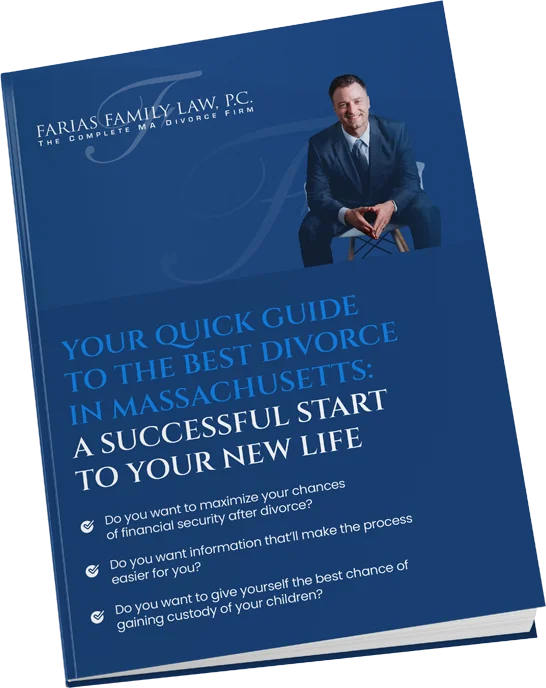Massachusetts Divorce Process

For a contested divorce, a complaint is filed, and the other party is then served usually by a constable with a copy of the complaint and a summons. And the process officially begins.
Next, a case management conference is scheduled. That’s the time at which the court establishes deadlines by which information (usually financial) will be exchanged. The exchange of information is known in the legal world as “discovery.”
If there are issues that require the immediate attention of the court, a motion for temporary orders can be filed by either party. At that hearing, issues such as child custody, visitation, support, whether alimony should be paid and how much, who’s responsible for the bills, and other similar issues are addressed. The resulting order remains in effect until either it’s changed or incorporated into a final agreement.
Example 1:
David, the breadwinner, leaves his wife, Janice, and their children at home, and moves in with his new girlfriend. Janice must file a motion for temporary orders – usually together with a complaint about divorce – to put child support in place as soon as possible.
Example 2:
Ted and Tina decide to live separately while their divorce is pending. Tina is upset that Ted is seeing another woman, so she will not allow him to see the children. Ted must immediately file a motion for temporary orders to address the issue.
The next step is a pretrial conference hearing. At that stage, the judge expects the attorneys and parties to continue to try to resolve the case. If there are outstanding issues, the judge may weigh in on them and attempt to guide the parties to a resolution – or at least narrow the issues. If the case is still not resolved at a pretrial conference hearing, it’s usually scheduled for trial.
The trial is the event at which the judge hears and examines evidence on the case: witness testimony, including the parties, documentary evidence, including the parties’ financial statements and records, business records, expert testimony, etc. At the conclusion, the judge rules on the contested issues.
It’s important to understand that if the parties come to an agreement at any point during a contested divorce, the divorce then becomes uncontested, an agreement is signed, and the parties can be divorced relatively quickly.
An uncontested divorce, on the other hand, may only be filed if the parties are in agreement on all of the issues at the outset. The divorce agreement is signed and filed along with some other necessary documents, and an uncontested divorce hearing is scheduled. At that hearing, the judge usually approves the divorce. The main drawback of proceeding uncontested from the beginning is that it creates an opportunity for one of the parties to stall indefinitely because the case is not in court.
Example 3:
Wendy wants a divorce as soon as possible. Husband tells her that he wants to work things out before filing. Weeks and months come and go and he’s dragging his feet, and there’s nothing preventing him from dragging his feet further. If the wife had filed initially, there would be regularly scheduled court events, which may have put pressure on husband to resolve the case or risk having it scheduled for trial.
For uncontested divorces, mediation is a useful tool for parties that believe they can come to an agreement but want some input from a neutral third-party. For higher-quality mediation, the parties must hire someone – usually an experienced attorney – to hear both sides and make a recommendation. If the parties agree, they may file uncontested. It’s recommended that you retain a divorce attorney to advise you during the mediation process – a mediator is not looking out for your best interest, but your own attorney will.
Tip:
A contested divorce becomes uncontested when parties reach an agreement on all issues. So if you’re close to an agreement and want the case resolved sooner rather than later, but think your spouse will delay, you may file contested to move the process along, then change it to uncontested when you have an agreement.
Source: https://www.linkedin.com/pulse/divorce-process-ma-bill-farias/

Your Quick Guide To The Best Divorce In Massachusetts
Download A Free Copy Of Our EBook, “Your Quick Guide To The Best Divorce In Massachusetts: A Successful Start To
Your New Life” By Clicking On The Link Below.

